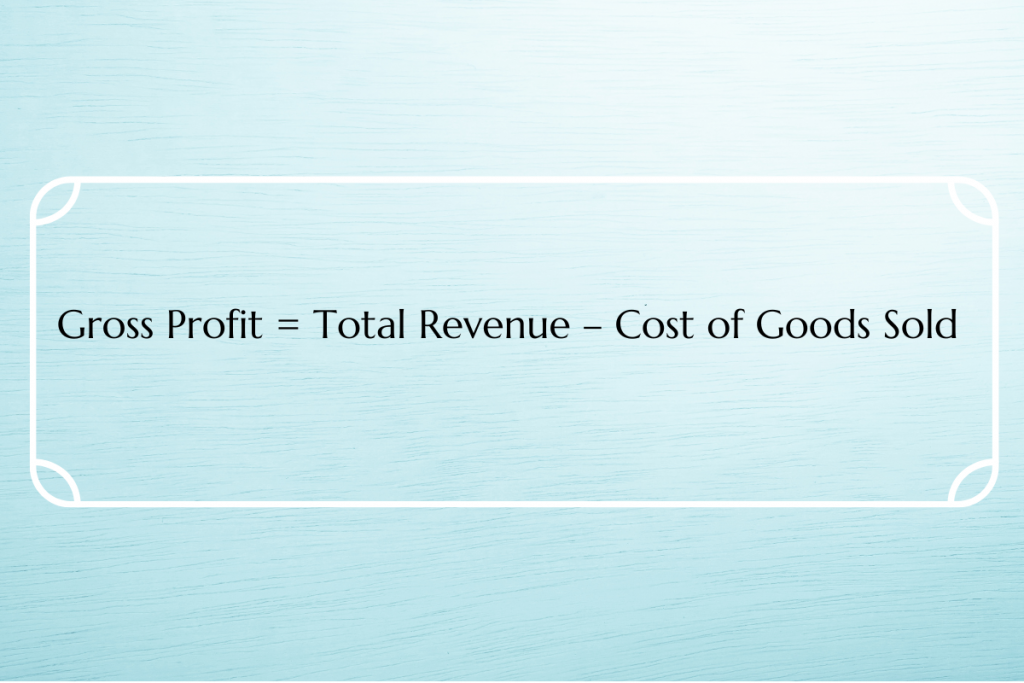Gross profit is a fundamental financial metric that provides critical insights into a business’s operational efficiency and its ability to generate profits. Understanding gross profit is essential for business owners, investors, and stakeholders as it serves as a preliminary indicator of a company’s profitability and financial health.
This discussion will delve into the concept of gross profit, the importance of gross margin, the role of profit margins, and how these figures are represented in an income statement. It will further explore the notion of a ‘good’ gross profit and how businesses can strive towards achieving it. By the end of this exploration, you should have a comprehensive understanding of gross profit and its significant role in business operations and financial analysis.
Learn how Synder streamlines bookkeeping and accounting by reducing manual data entry.
Definition and explanation of what is gross profit
Gross profit, also known as gross income, is a financial metric that provides insight into a company’s operational efficiency and profitability. It’s essentially the difference between a company’s total sales revenue and the direct costs associated with producing the goods or services sold, often referred to as the cost of goods sold (COGS).
Gross profit is an important measure because it reflects the core profitability of a company before overhead costs, and it’s a key factor in the calculation of the gross profit margin. It’s also a critical component of the income statement, providing insights into how effectively a company generates profit from direct labor and direct materials.
Calculating gross profit: revenue and Cost of Goods Sold
Gross profit is calculated by subtracting the cost of goods sold (COGS) from the total revenue. Total revenue, often referred to as sales, is the total receipts from selling a firm’s goods or services to its customers. On the other hand, the COGS includes all the direct costs related to the production of the goods sold by a company or the services it provides. This includes both direct labor costs and direct materials costs.
Here’s the formula:
Gross Profit = Total Revenue – Cost of Goods Sold (COGS)
For example, if a company generates $500,000 in sales and the COGS is $300,000, the gross profit would be $200,000.

The importance of gross profit in business operations
Gross profit is a vital measure of a company’s operational efficiency and profitability. It shows how efficiently a company uses its resources, such as labor and supplies, in the production process. A higher gross profit implies that the company is generating more revenue per dollar of COGS, indicating effective cost management and potentially healthier profit margins.
Gross profit also provides business owners with valuable insight into pricing strategies. If the gross profit is too low, it may indicate that the prices of goods or services need to be increased or that the COGS must be reduced, either through cost-saving measures or more efficient production techniques.
Gross profit vs net profit: the differences
While gross profit shows a company’s profitability after accounting for the direct costs of producing its goods or services, net profit (also known as net income or net earnings) takes into account all expenses, not just the COGS. This includes operating expenses like salaries, rent, utilities, depreciation, and taxes.
Here’s the formula for Net Profit:
Net Profit = Gross Profit – Total Operating Expenses – Taxes – Interest
Net profit gives a more comprehensive view of a company’s profitability and its ability to generate profit from all its operations. While gross profit gives an initial idea of operational efficiency, net profit shows the bottom line – the actual profit a company made during a specific period.
For example, a company might have a high gross profit but a low net profit if it has high operational costs, interest payments, or tax obligations. Therefore, while both gross profit and net profit are important, they offer different perspectives on a company’s financial health.
Explanation and calculation of gross margin
Gross margin, also known as gross profit margin, is a profitability ratio that shows what portion of a company’s revenues remains after accounting for the direct costs of goods sold (COGS). It is expressed as a percentage and indicates how efficiently a company is using its materials and labor in the production process.
To calculate gross margin, you divide gross profit by total revenue and then multiply by 100 to get a percentage.
Here’s the formula:
Gross Margin (%) = (Gross Profit / Total Revenue) * 100
For instance, if a company has a gross profit of $200,000 and total revenue of $500,000, the gross margin would be (200,000/500,000) * 100 = 40%.

Relationship between gross profit and gross margin
Gross profit and gross margin are closely related, but they serve slightly different purposes in financial analysis. While gross profit is the absolute dollar amount that a company retains from its revenue after accounting for COGS, gross margin is a relative measure that expresses gross profit as a percentage of total revenue.
The gross margin is useful for comparing the profitability of companies in the same industry, especially when their sales volumes vary significantly. A higher gross margin percentage indicates that a company can make a reasonable profit on sales, as long as it keeps its overhead costs under control.
The gross margin can also be used to track a company’s financial health over time. If the gross margin is decreasing, the company is becoming less efficient at producing its goods or services, which could impact profitability. Conversely, an increasing gross margin means that the company is becoming more efficient or is able to charge higher prices.
Different types of profit margins
Profit margins are financial metrics used to assess a company’s profitability and financial health. They are usually expressed as percentages and can be broken down into three main types:
Gross Profit Margin: As previously mentioned, this is calculated by dividing gross profit by revenue and then multiplying by 100. It shows the percentage of revenue that exceeds the cost of goods sold.
Operating Profit Margin: This margin takes into account operating expenses such as rent, utilities, and wages, but it excludes interest and taxes. It’s calculated by dividing operating profit (or Earnings Before Interest and Tax – EBIT) by total revenue and then multiplying by 100. This margin gives a clearer picture of a company’s operational efficiency and profitability.
Net Profit Margin: This is the most comprehensive of the profit margins, as it takes into account all expenses, including interest and taxes. It’s calculated by dividing net profit by total revenue and then multiplying by 100. The net profit margin reflects the company’s overall ability to convert income into profit.
The significance of profit margins in business
Profit margins are significant because they provide insights into different aspects of a company’s performance and financial health.
Gross profit margin provides an indication of how well a company is managing its direct costs of goods sold. It’s a crucial measure of production efficiency and cost management.
The operating profit margin provides a view of the company’s operational efficiency. It shows how well the company is managing both its direct costs and its operational expenses, providing a measure of the company’s pricing strategy and operational control.
Lastly, the net profit margin provides an understanding of a company’s overall profitability. It shows how much of every dollar of revenue is actually kept as profit, providing a clear picture of the company’s overall financial health. A company could have high gross and operating profit margins, but if its net profit margin is low, it indicates that it’s not managing interest, tax, and other non-operational costs effectively.
The role of gross profit in the income statement
The income statement, also known as the profit and loss statement, is a financial report that provides a summary of a company’s revenues, costs, and expenses over a specific period. Gross profit is a key component of the income statement and can be found near the top of the report.
The income statement typically starts with the total revenue or sales at the top. Directly below this, you’ll find the cost of goods sold (COGS). When you subtract COGS from total revenue, you get the gross profit.
Therefore, gross profit is usually the second or third line item on the income statement, following total revenue and COGS. It provides the first glimpse of a company’s profitability before accounting for operating expenses, interest, and taxes accounting.
Check out how easily you can create P&L with Synder software. For more information, book an office hour.
Gross profit’s influence on the overall financial health of a business
Gross profit provides a measure of how effectively a company generates profit from its direct labor and direct materials, the two main components of COGS.
A high gross profit suggests that a company is managing its manufacturing or service delivery costs effectively and generating a sufficient markup on its goods or services. This not only indicates profitability but also leaves room to cover operating expenses, invest back into the business, and provide returns to shareholders.
In contrast, a low or declining gross profit could signal problems. It may indicate that a company’s production costs are too high, its prices are too low, or it’s not managing its resources effectively. If gross profit isn’t sufficient to cover operating expenses, the company could operate at a loss, threatening its financial health.
Moreover, trends in gross profit over time can provide early warning signs of issues that could impact profitability. For example, if gross profit margins are shrinking, it could indicate rising production costs or falling prices, either of which could squeeze profit margins and affect the company’s bottom line.
Defining a good gross profit
A ‘good’ gross profit varies by industry, company size, and business model. In general, a good gross profit is one that covers a company’s operating expenses with enough left over for investment, debt repayment, and returns to shareholders. A company with a ‘good’ gross profit is likely to have a competitive advantage in its industry, as it can afford to invest in growth while still maintaining profitability.
Factors influencing a good gross profit
Achieving a good gross profit is crucial to the financial health and overall success of a business. However, there are various factors that can influence whether a business is able to reach this desired financial state. Understanding these factors can help businesses develop strategies to optimize their gross profit.
Pricing strategy
One of the most direct ways to influence gross profit is through the pricing strategy of a business. The prices set for goods or services directly impact the revenue earned. If prices are too low, it can limit the gross profit, regardless of how many units are sold. On the other hand, setting prices too high may deter customers, leading to lower sales volumes. Therefore, businesses must find a balance where they can attract customers and maintain healthy profit margins.
Cost control
The other side of gross profit is the cost of goods sold (COGS), which includes all the direct costs associated with producing the goods or services sold by the business. Effective cost control is essential for achieving a good gross profit. This could involve negotiating better deals with suppliers, improving operational efficiency to reduce waste, or investing in technology to lower production costs.
Product mix
The mix of products or services that a business offers can also influence its gross profit. Different products typically have different profit margins. A business that sells a higher proportion of high-margin products will generally have a better gross profit than a business that primarily sells low-margin products. Efficient employee scheduling helps ensure adequate staffing without unnecessary labor costs, improving operational efficiency and supporting a stronger gross profit. Therefore, managing the product mix effectively can have a significant impact on gross profit.
Market conditions
Finally, external market conditions can play a big role in influencing gross profit. Factors such as competition, market demand, and economic conditions can affect both the prices a business can charge and the volume of sales it can achieve. For instance, in a strong economy, businesses may be able to increase prices or sell higher volumes, both of which can enhance gross profit.
Strategies for enhancing gross profit
In any business, enhancing gross profit is a key objective to boost overall profitability and stimulate growth. The greater the gross profit, the more capital a company has to cover operating expenses and invest in its future.
There are various strategies that a business can employ to enhance its gross profit. These strategies revolve around two main avenues: increasing total revenue and reducing COGS. By effectively managing these areas through price adjustments, cost control, operational efficiency, and product mix optimization, businesses can significantly improve their gross profit and drive their financial success.
The impact of an improved gross profit on business growth
An improved gross profit can significantly influence business growth and prosperity. When a company successfully enhances its gross profit, it can reap several substantial benefits that contribute directly to its growth trajectory.
Increased operational funds
With a higher gross profit, a company has more funds to cover its operating expenses. This allows the business to run smoothly and efficiently, enabling it to grow without being hampered by day-to-day financial concerns.
Investment in expansion
An improved gross profit provides the company with additional capital to invest in business expansion. This could involve opening new locations, entering new markets, or launching new products or services. Each of these expansion activities can contribute to increased revenue and further business growth.
Greater financial stability
Higher gross profit can lead to increased financial stability. It provides a buffer that can help a company weather economic downturns or unexpected expenses. This stability can be particularly valuable for growth, as it allows a company to take calculated risks without jeopardizing its financial health.
Profit reinvestment
A portion of the increased gross profit can be reinvested back into the business to further fuel growth. This reinvestment could fund research and development, marketing initiatives, staff training, infrastructure upgrades, and other activities that contribute to business growth.
Improved investor appeal
An improved gross profit can make a company more attractive to investors. Investors look for businesses with healthy profit margins as they indicate efficiency, financial stability, and potential for high returns. Therefore, a high gross profit can attract additional investment, providing further capital for business growth.
Conclusion
Gross profit is a critical measure of a company’s operational efficiency and its ability to generate profits. It’s the first glimpse of profitability provided in the income statement, and it plays a significant role in the overall financial health of a business.
A ‘good’ gross profit, which is influenced by factors like pricing strategy and cost control, can help a company invest in growth, weather financial storms, and provide returns to shareholders. By using strategies to enhance gross profit, companies can improve their financial health and position themselves for long-term success.
Learn How long does it take to get tax refund and read our comparison Debit vs Credit accounting.

.png)




